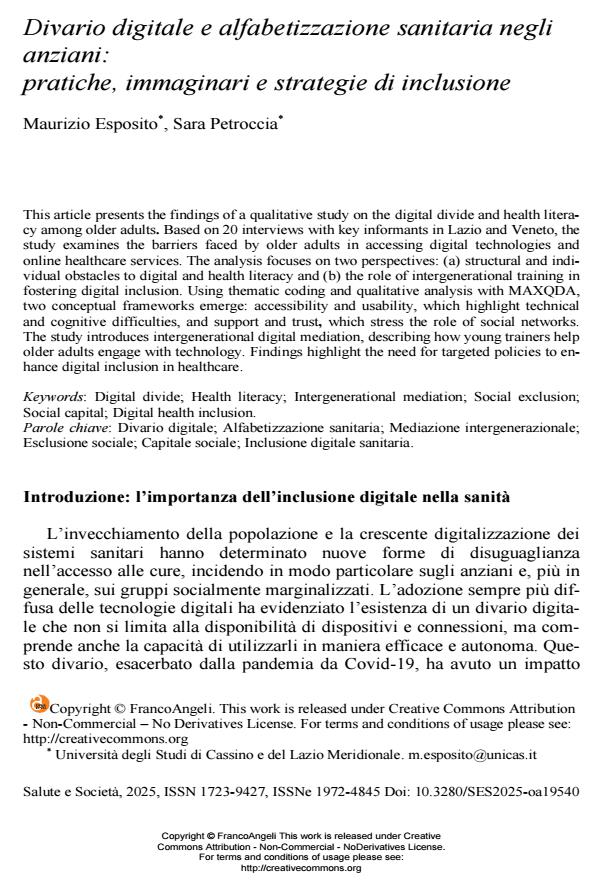Divario digitale e alfabetizzazione sanitaria negli anziani: pratiche, immaginari e strategie di inclusione
Titolo Rivista SALUTE E SOCIETÀ
Autori/Curatori Maurizio Esposito, Sara Petroccia
Pubblicazione Online First 09/04/2025 Fascicolo 2025/2 Suppl.
Lingua Italiano Numero pagine 17 P. 1-17 Dimensione file 431 KB
DOI 10.3280/SES2025-oa19540
Il DOI è il codice a barre della proprietà intellettuale: per saperne di più
clicca qui

FrancoAngeli è membro della Publishers International Linking Association, Inc (PILA)associazione indipendente e non profit per facilitare (attraverso i servizi tecnologici implementati da CrossRef.org) l’accesso degli studiosi ai contenuti digitali nelle pubblicazioni professionali e scientifiche
This article presents the findings of a qualitative study on the digital divide and health litera-cy among older adults. Based on 20 interviews with key informants in Lazio and Veneto, the study examines the barriers faced by older adults in accessing digital technologies and online healthcare services. The analysis focuses on two perspectives: (a) structural and indi-vidual obstacles to digital and health literacy and (b) the role of intergenerational training in fostering digital inclusion. Using thematic coding and qualitative analysis with MAXQDA, two conceptual frameworks emerge: accessibility and usability, which highlight technical and cognitive difficulties, and support and trust, which stress the role of social networks. The study introduces intergenerational digital mediation, describing how young trainers help older adults engage with technology. Findings highlight the need for targeted policies to en-hance digital inclusion in healthcare.
Parole chiave:Divario digitale; Alfabetizzazione sanitaria; Mediazione intergenerazionale; Esclusione sociale; Capitale sociale; Inclusione digitale sanitaria.
Maurizio Esposito, Sara Petroccia, Divario digitale e alfabetizzazione sanitaria negli anziani: pratiche, immaginari e strategie di inclusione in "SALUTE E SOCIETÀ" 2 Suppl./2025, pp 1-17, DOI: 10.3280/SES2025-oa19540